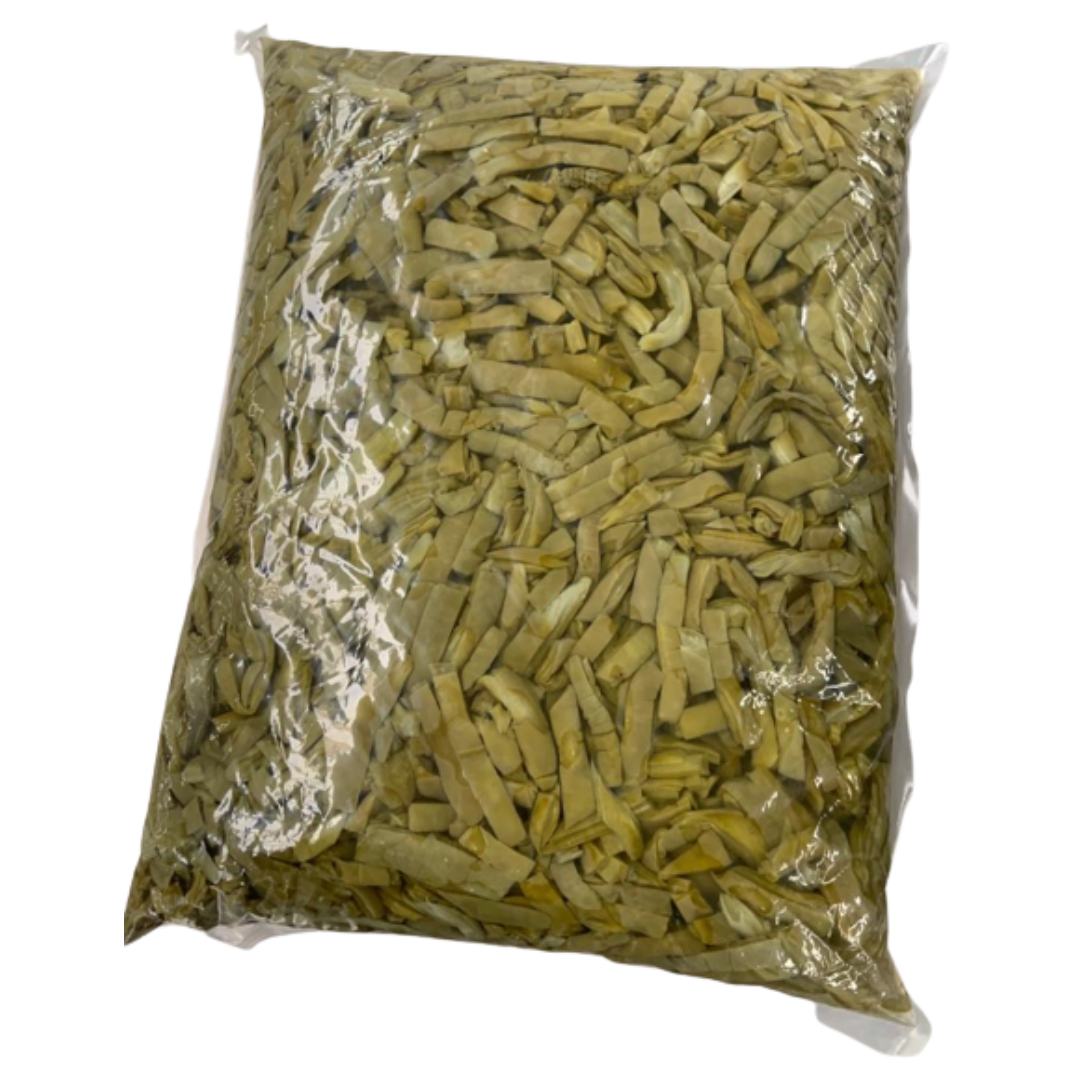Pickled Nopal
INGREDIENTS:
Tender prickly pear cactus, water, salt, citric acid, and sodium benzoate as a preservative.
BENEFITS:
Contains natural protein and fiber that aids in digestion. Contains no fats or sugars.
DIRECTIONS FOR USE:
Rinse, let them drain, and they’re ready! Serve them alongside your favorite dish or as an ingredient in delicious recipes.
RECOMMENDATIONS:
Store it in a cool place away from direct light. Refrigerate after opening.
SHELF LIFE:
10 months
The nopal pads can be eaten raw or cooked, used in marmalades, soups, stews and salads, as well as being used for traditional medicine or as fodder for animals. Farmed nopales are most often of the species Opuntia ficus-indica or Opuntia matudae although the pads of almost all Opuntia species are edible. The other part of the nopal cactus that is edible is the fruit, called the tuna in Spanish and the “prickly pear” in English.
Nopales are most commonly used in Mexican cuisine in dishes such as huevos con nopales “eggs with nopal”, carne con nopales “meat with nopal”, tacos de nopales, in salads with tomato, onion, and queso panela (panela cheese), or simply on their own as a side vegetable. Nopales have also grown to be an important ingredient in New Mexican cuisine and in Tejano culture of Texas.
Per US cup serving, nopal fruit is an excellent source of the dietary mineral manganese and a good source of vitamin C, magnesium and calcium, with nutrient content improving as the plant matures. Its calcium may not be biologically available because it is present as calcium oxalate, a non-absorbable complex in the small intestine


